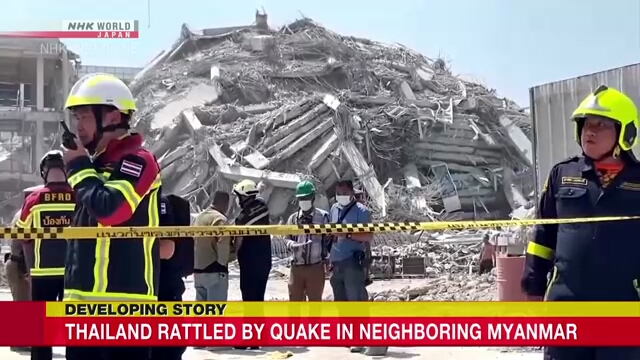Myanmar Earthquake: Assessing the Damage and the Path to Recovery
A powerful earthquake recently struck Myanmar (also known as Burma), leaving a trail of destruction and raising serious concerns about the extent of the damage and the challenges ahead for recovery efforts. This article provides an up-to-date assessment of the situation, highlighting the impact on infrastructure, communities, and the ongoing relief work.
The Earthquake's Impact: A Devastating Blow
The earthquake, measuring [Insert Magnitude] on the Richter scale, hit [Location of Epicenter] on [Date] at [Time]. Its impact was felt across a wide area, causing widespread damage to buildings, roads, and vital infrastructure. Early reports suggest [Number] fatalities and [Number] injuries, though these numbers are likely to rise as rescue efforts continue and access to remote areas is established.
Key Areas Affected:
- [Region 1]: Significant damage to residential buildings, including [Specific examples of damage, e.g., collapsed structures, cracked walls]. Reports indicate challenges in accessing certain areas due to [Obstacle, e.g., landslides, road blockages].
- [Region 2]: Damage to critical infrastructure, including [Specific examples, e.g., hospitals, schools, power lines]. Disruptions to essential services, such as water and electricity, are widespread.
- [Region 3]: The earthquake triggered [Natural disaster consequence, e.g., landslides], further compounding the challenges faced by rescue teams and hampering relief efforts.
Assessing the Damage: A Complex Task
Assessing the full extent of the damage is a complex undertaking. Challenges include:
- Access to Remote Areas: Many affected areas are difficult to reach due to damaged roads and infrastructure. This hinders rescue and relief efforts and makes accurate damage assessment difficult.
- Communication Breakdown: The earthquake disrupted communication networks, making it challenging to gather information from affected regions.
- Resource Limitations: The country's existing infrastructure and resources are already strained, making the recovery process even more challenging.
The Road to Recovery: International Aid and Local Efforts
The international community has responded with pledges of aid and support. Organizations like [List relevant organizations, e.g., the Red Cross, UNICEF] are actively involved in providing emergency relief, including food, water, medical supplies, and temporary shelter. Local communities are also playing a crucial role in rescue and recovery efforts, demonstrating remarkable resilience in the face of adversity.
Challenges in Recovery:
- Funding: Securing sufficient funding for long-term reconstruction and recovery will be a significant challenge.
- Coordination: Effective coordination between international aid agencies, the Myanmar government, and local communities is crucial for efficient relief and recovery efforts.
- Political Instability: The ongoing political situation in Myanmar could further complicate relief efforts and long-term recovery.
Looking Ahead: Reconstruction and Resilience
The recovery from this devastating earthquake will be a long and arduous process. It requires a coordinated effort from international partners, the Myanmar government, and local communities. Focusing on building back better, with resilient infrastructure and community-led recovery initiatives, will be key to ensuring that Myanmar can withstand future disasters.
For the latest updates and information on how you can help, please refer to the following resources:
- [Link to reputable news source]
- [Link to relevant aid organization]
- [Link to government information source (if available)]
This article will be updated as more information becomes available. We encourage readers to stay informed and support the ongoing relief efforts.
